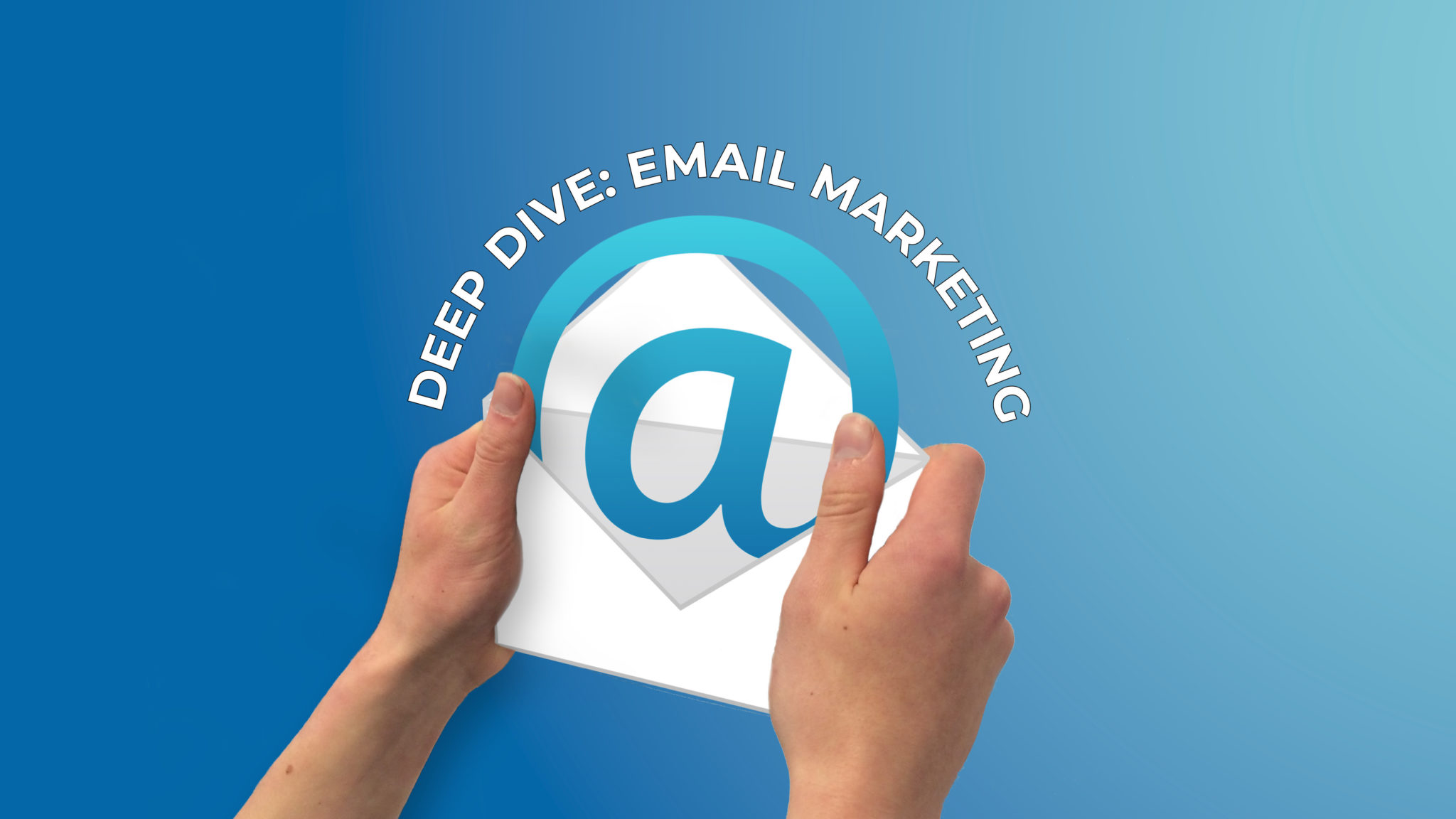In our recent blog, 5 Growth Trends to Watch in 2020, we shared the trends we find are most crucial to focus on this year. With companies shifting away from spending big advertising budgets on campaigns that are difficult to track, there is a growing need for more information on how to efficiently spend budgets on traceable performance. Marketing automation through email is one of the biggest trends we see and advise using when you have a solid database. Whether you sell your products and services offline or online, collecting emails is crucial for your sales funnel. In this blog post, we present a deep dive into email automation.
Before we jump into the how’s and the what’s of email marketing, let me just put this out there already: if you have a website, you should be collecting emails. By investing time in creating a database and slowly growing it, you’ll be able to get more out of your marketing efforts. If you’re currently doing manual emailing, stick around as we dive deep into all the ways you can automate emails to grow your business.
Understanding Consumer Mindset First
Email marketing can be used for multiple levels of the funnel but is most effective for acquisition, activation, and retention, but it’s important to first understand how email can fall into your consumer’s busy lives. There are many reasons for people to bounce off your website without converting, whether a conversion is defined as booking a meeting, completing a form, or making a purchase, and it’s not always because your website is not optimized.
In today’s day and age, people are browsing the Internet on their phones, which creates plenty of distraction opportunities. They could have clicked an ad to land on your website while having to step down from the train and head to their next meeting, or perhaps their partner finally found the right series to watch with them on Netflix so they dropped off a form halfway. This is important to understand because it helps personalize your emails when sending them, but more on that in our post Personalization.
In today’s day and age, people are browsing the Internet on their phones, which creates plenty of distraction opportunities. They could have clicked an ad to land on your website while having to step down from the train and head to their next meeting, or perhaps their partner finally found the right series to watch with them on Netflix so they dropped off a form halfway. This is important to understand because it helps personalize your emails when sending them, but more on that in our post Personalization.
Examples On Where You Can Use Email Automation
Multiple-step lead generation form: If you’re a service provider or a product seller, you probably need to collect some information from your leads other than basic contact details. You might need to know what their company size is or ask them to upload a document.
In this case, setting up a drip-email campaign would be a very efficient approach to automating lead generation. We say that because it’s important that you address people at the correct step of the form where they dropped off because – of course – the more personalized your message is the better! A drip-email campaign is a series of emails that are sent out based on user behavior using pre-defined triggers such as “if a user drops off at this step, send him that email”.
Sign-up process: Another example of where a drip-email campaign brings value is a sign-up process. Depending on the complexity of your sign-up process, your customers might drop off unless you give them that gentle nudge. Here’s an example of an automation flow.
In this case, setting up a drip-email campaign would be a very efficient approach to automating lead generation. We say that because it’s important that you address people at the correct step of the form where they dropped off because – of course – the more personalized your message is the better! A drip-email campaign is a series of emails that are sent out based on user behavior using pre-defined triggers such as “if a user drops off at this step, send him that email”.
Sign-up process: Another example of where a drip-email campaign brings value is a sign-up process. Depending on the complexity of your sign-up process, your customers might drop off unless you give them that gentle nudge. Here’s an example of an automation flow.

5 steps to get yourself started with email automation
So now that we’ve covered some basic examples of when to use email marketing automation, we would like to invite you to start today. To begin with, first, set up your email automation strategy and drafting the plans where you will use email automation. By defining your needs, you will be able to map out what you need per email campaign from copywriting, supporting images/videos, to the total number of emails needed per month.
Second, make sure you have a clean database. This means all the fields should be clear and correct, no duplicates are available and any critical missing fields that affect the email campaign should be moved to another document. Create your contact lists. Those could be made in Excel or Google Sheets. Make sure there is a clear differentiator within your contact list that you will use in your emails.
Third, explore which email automation tool works best for your company. This depends on the number of contacts you have and the number of emails you will need to send them. Plenty of software today also includes other marketing tools. Make sure you are aware of your needs as a company first, not as a Marketer only.
Fourth, draft your content, design your emails and prepare the email scheduling chart. Be mindful of GDPR rules and make sure you give users an option to unsubscribe.
Five, launch your email campaigns and measure performance closely. It’s important to stay agile and account for time to change your strategy if needed. Whether it’s from a copywriting perspective to the days when your emails are sent out.
Not yet convinced about this whole email automation thing? We’ve compiled our favorite statistics on the subject:
Second, make sure you have a clean database. This means all the fields should be clear and correct, no duplicates are available and any critical missing fields that affect the email campaign should be moved to another document. Create your contact lists. Those could be made in Excel or Google Sheets. Make sure there is a clear differentiator within your contact list that you will use in your emails.
Third, explore which email automation tool works best for your company. This depends on the number of contacts you have and the number of emails you will need to send them. Plenty of software today also includes other marketing tools. Make sure you are aware of your needs as a company first, not as a Marketer only.
Fourth, draft your content, design your emails and prepare the email scheduling chart. Be mindful of GDPR rules and make sure you give users an option to unsubscribe.
Five, launch your email campaigns and measure performance closely. It’s important to stay agile and account for time to change your strategy if needed. Whether it’s from a copywriting perspective to the days when your emails are sent out.
Not yet convinced about this whole email automation thing? We’ve compiled our favorite statistics on the subject:
– ABOUT 49% OF BUSINESSES USE SOME FORM OF EMAIL AUTOMATION.
– 63% OF COMPANIES ARE OUTPERFORMING COMPETITORS WITH HELP FROM MARKETING AUTOMATION
– LEAD NURTURING EMAILS GET 4-10 TIMES THE RESPONSE RATES COMPARED TO MASS EMAIL BLASTS.
– RELEVANT EMAILS SENT THROUGH DRIP CAMPAIGNS DRIVE 18 TIMES MORE REVENUE THAN GENERIC EMAILS.
If you’re ready to start the discussion on email automation, give us a call! For now, stay home, stay safe.
– 63% OF COMPANIES ARE OUTPERFORMING COMPETITORS WITH HELP FROM MARKETING AUTOMATION
– LEAD NURTURING EMAILS GET 4-10 TIMES THE RESPONSE RATES COMPARED TO MASS EMAIL BLASTS.
– RELEVANT EMAILS SENT THROUGH DRIP CAMPAIGNS DRIVE 18 TIMES MORE REVENUE THAN GENERIC EMAILS.
If you’re ready to start the discussion on email automation, give us a call! For now, stay home, stay safe.
Sources






